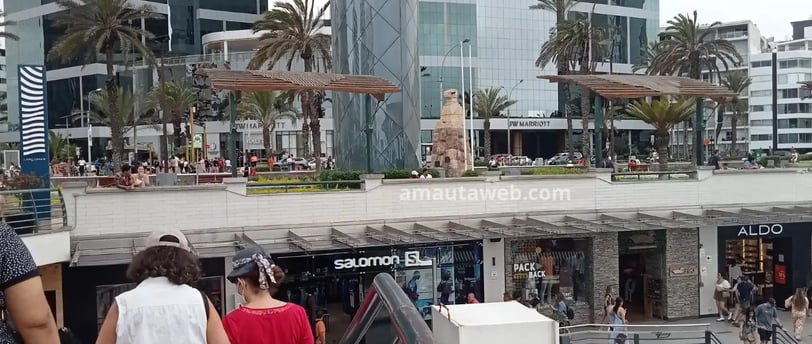Real Estate Boom in Lima, Peru
Javier Fernández
11/18/20244 min read


Real Estate Boom in Lima, Peru: Impacts and Challenges for the Future
The real estate boom that has transformed Lima over the past decade has been both a positive and complex phenomenon. While it has brought remarkable economic and urban growth, it has also generated a series of challenges that need to be addressed to ensure this boom leads to balanced and sustainable development. Below, we’ll explore not only the factors driving this growth but also its social impacts, gentrification, and the role of public policies in this process.
Vertical Expansion: The New Faces of Lima
The real estate boom in Lima has been especially evident in the vertical expansion of the city. Districts such as Miraflores, San Isidro, Surco, and San Borja, once known for their low-rise homes, are now dominated by modern office buildings, luxury apartments, and residential complexes. As the population grows and urbanization intensifies, the demand for more efficient and higher spaces has driven the construction of skyscrapers and multi-family buildings.
What has driven this transformation?
Land Scarcity: The limited availability of land in the city center and surrounding areas has driven growth upwards. With less land available for housing development, construction companies have had to look for solutions in the sky, with multi-story buildings.
Modern Lifestyle: Buyers, especially young professionals and families, seek homes that offer proximity to workplaces and leisure areas. Real estate projects have been focused on offering modern apartments with various amenities such as gyms, pools, and communal areas.
Real Estate Investment: Lima has been an attractive destination for investors, both local and foreign. The high profitability of real estate projects has led to a constant flow of capital, contributing to the expansion of the market.
Social Impacts of the Real Estate Boom
One of the major negative effects of the real estate boom in Lima has been the growing inequality in access to housing. While the supply of high-end homes has increased in exclusive neighborhoods, rising prices have excluded a significant portion of the population. High-cost homes have displaced many middle- and lower-income families to the outskirts of the city, where the supply is more affordable but the quality of life and services are still limited.
Gentrification: An Expanding Phenomenon
The process of gentrification has been evident in neighborhoods like Barranco, where rising rental prices and the purchase of properties by investors have completely changed the area's demographics and character. Original communities have been displaced, often without the opportunity to access the new economic opportunities generated by investment. This gentrification has also impacted access to services and the cultural identity of certain neighborhoods.
What impact does gentrification have in Lima?
Displacement of Residents: Lower-income families cannot afford the rising rents, and as a result, they are forced to move to more distant and less developed areas.
Loss of Cultural Identity: As neighborhoods “modernize,” local traditions and customs that made the area unique can sometimes be lost. This can lead to the homogenization of the city and the loss of its most distinctive characteristics.
Increased Social Exclusion: The high cost of housing creates a more segmented city, where only a few can enjoy the benefits of economic growth, while the majority is pushed to the outskirts, where opportunities are more limited.
Challenges and Opportunities: The Role of the Government
The Peruvian government plays a crucial role in managing this real estate boom. Although the private sector has been the primary driver of growth, public policies are essential to ensure that development is inclusive and sustainable. The state needs to implement regulations that not only favor investment but also guarantee access to decent housing for all segments of society.
Some areas where the government can intervene include:
Promoting Social Housing: It is essential for the state to encourage the construction of low-cost housing, especially for middle- and low-income groups. Financing programs, subsidies, and available land for such purposes can help improve the housing supply in peripheral areas.
Inclusive Urban Planning Policies: Urban policies must promote the construction of affordable spaces in terms of price, but also in terms of quality of life. Investing in basic infrastructure like water supply, public transportation, and green spaces in peripheral areas will help reduce inequality between more developed districts and those further out.
Regulating Rent and Prices: Limiting excessive rent and price increases can help avoid the exclusion of middle- and low-income people. Ensuring that homes remain accessible to more people can balance demand in Lima's more exclusive neighborhoods.
The Future of the Real Estate Boom in Lima
The real estate boom in Lima continues to evolve, but it also faces new challenges, such as potential economic slowdown and market saturation in some areas. However, there is still great potential in the peripheral zones, where housing construction and infrastructure improvement are essential for long-term growth. Additionally, real estate developments with social and environmental awareness could open up new opportunities to improve the quality of life for Lima’s residents.
Conclusion
The real estate boom in Lima has brought both benefits and challenges. While the growth has improved the city’s infrastructure and generated economic dynamism, it has also exacerbated inequality and led to processes of gentrification that have affected vulnerable sectors. For the real estate boom to be truly sustainable and beneficial for the entire population, it is necessary to find a balance between economic development, social inclusion, and respect for the identity of Lima’s neighborhoods.
The future of Lima depends on the decisions made today regarding urban planning, public policies, and collaboration between the private sector and the government to ensure that all citizens can enjoy the fruits of this growth.
